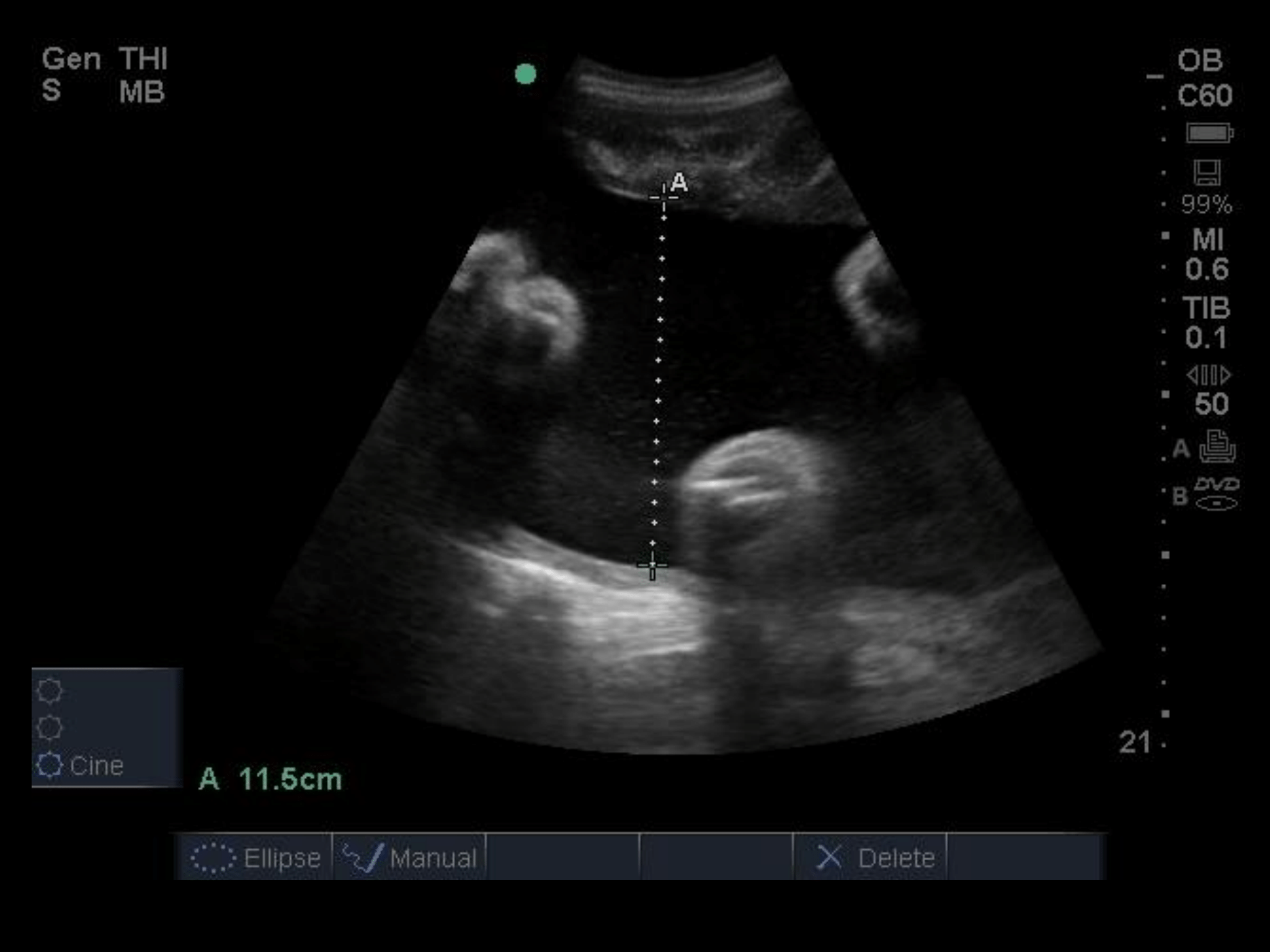

This creates abnormal pressure both inside the uterus and outside on the internal organs surrounding it. As the volume of excess amniotic fluid inside the mother's womb continues to build it starts to swell in size (like a water balloon with too much water). The more excess amniotic fluid there is the greater the severity of polyhydramnios. There are typically no clinical symptoms associated with mild polyhydramnios. Mild polyhydramnios is generally innocuous and rarely causes any significant complications with the pregnancy. Mild polyhydramnios is defined as a value of 8–11 cm as opposed to 16 cm to 86 cm with severe polyhydramnios. The majority of polyhydramnios cases are classified as "mild" and only involve a small amount of excess amniotic fluid which builds up in the later stages of pregnancy. However, moderate to severe cases of acute polyhydramnios (in which amniotic fluid volume is high) can trigger major complications with pregnancy and birth and pose a health risk to the baby. Most of the time polyhydramnios is mild and is not harmful to the baby.

Polyhydramnios is diagnosed in approximately 1% of all pregnancies which makes it uncommon but not rare. Polyhydramnios is a condition that occurs when the volume of amniotic fluid exceeds normal levels.
#Normal amniotic fluid full#
When the baby is full term the level should drop down to around 600 ml. The normal amniotic fluid level peaks in the 34 th week of pregnancy when it should average around 800 ml. The normal volume of amniotic fluid varies based on the size of the baby and the stage of gestation but should be somewhere between a minimum of 500 ml and a maximum of 1000 ml. In a normal pregnancy the amount of amniotic fluid should stay within certain ranges. Amniotic fluid facilitates fetal growth, develops the lungs, insulates the womb from heat loss and acts as a protective cushion around the baby. The fetus not only floats around in amniotic fluid but actually inhales and exhales it.

This fluid plays a critical role in the process of fetal gestation. What is Polyhydramnios?Īmniotic fluid is the life-giving liquid substance that surrounds the fetus inside the womb. Polyhydramnios is uncommon, occurring in about 1.5 out of every 100 pregnancies. Polyhydramnios (also known as " hydramnios") is the medical term for a pregnancy complication in which there is too much amniotic fluid inside the womb.


 0 kommentar(er)
0 kommentar(er)
